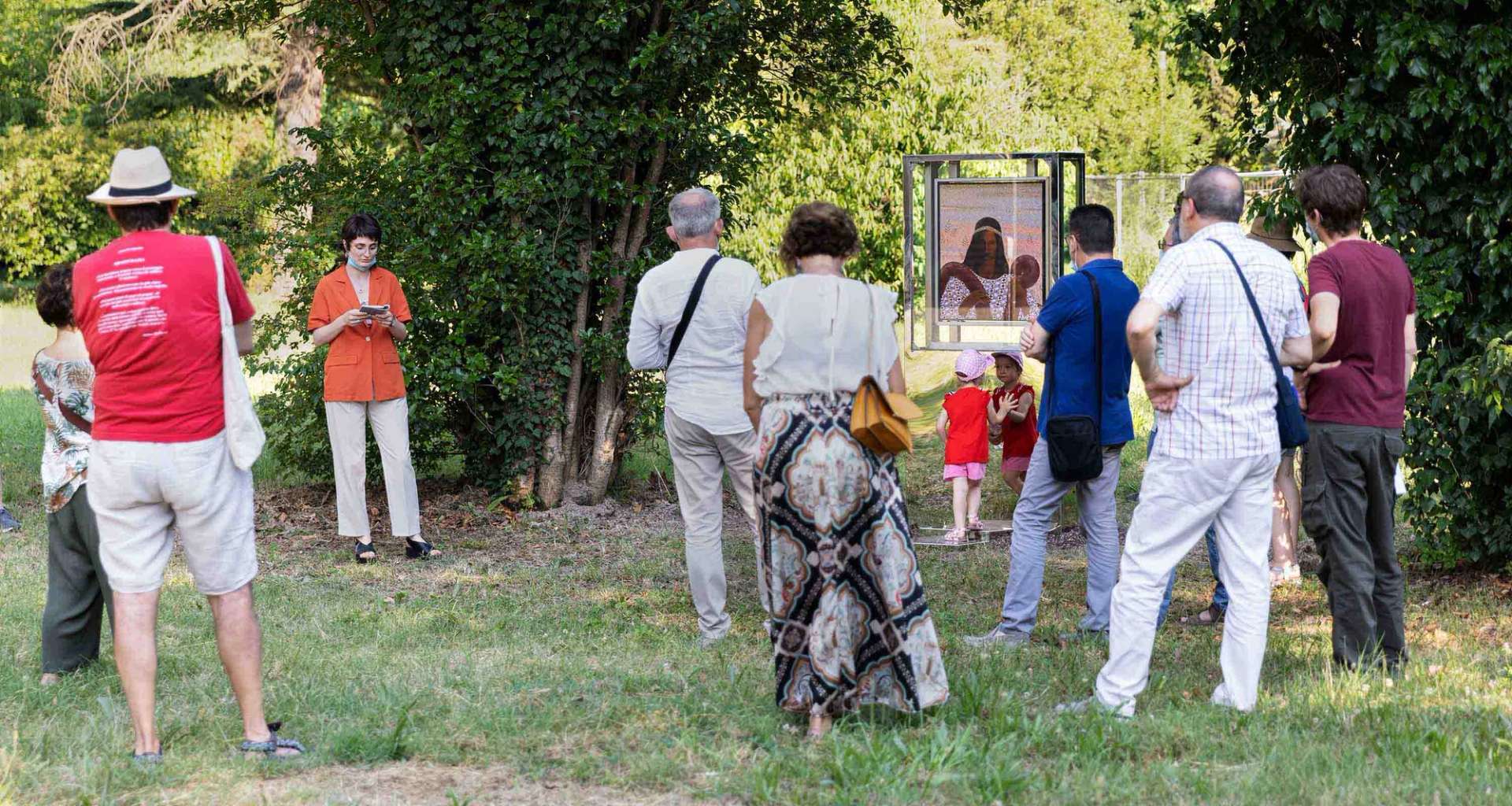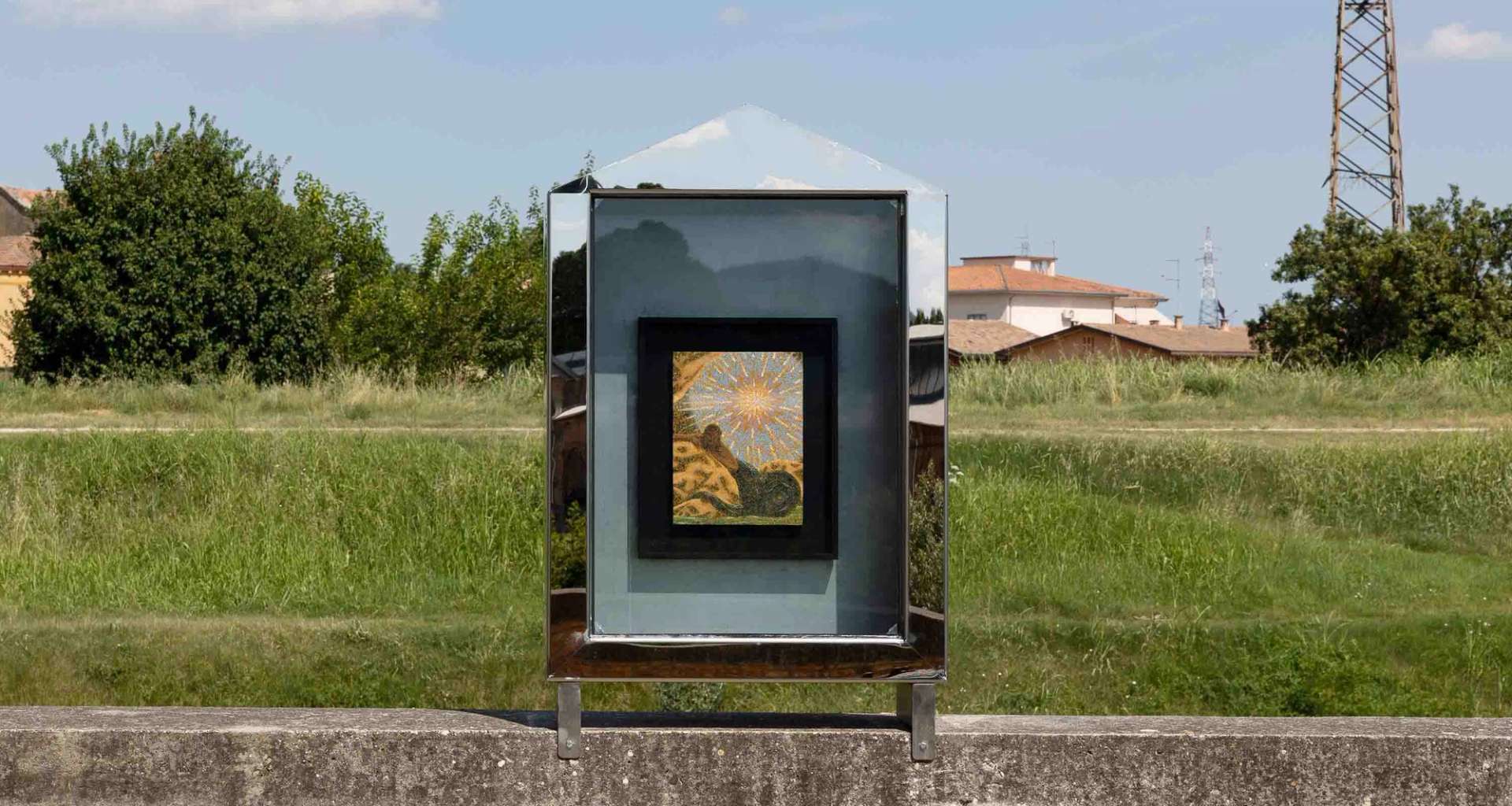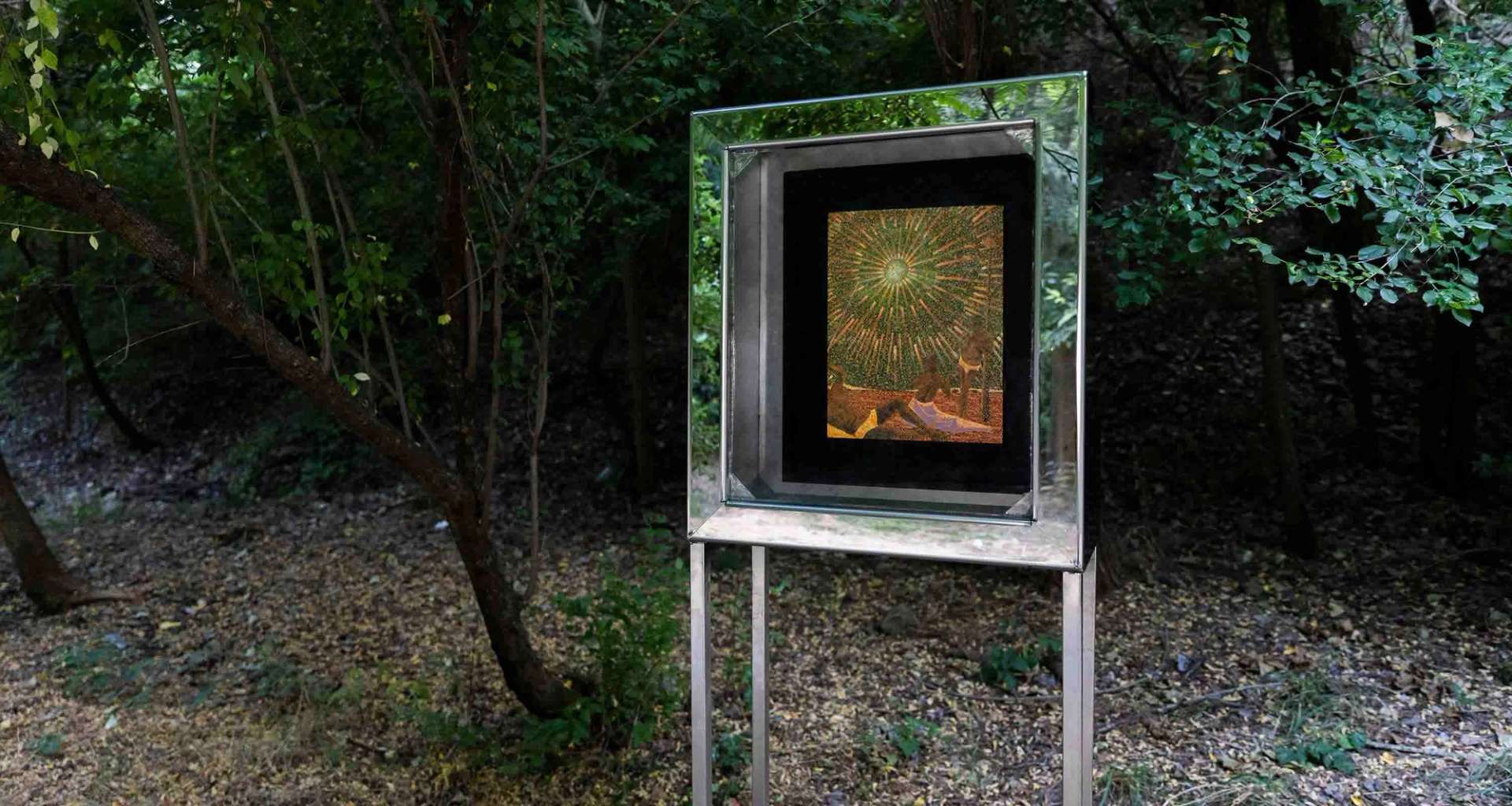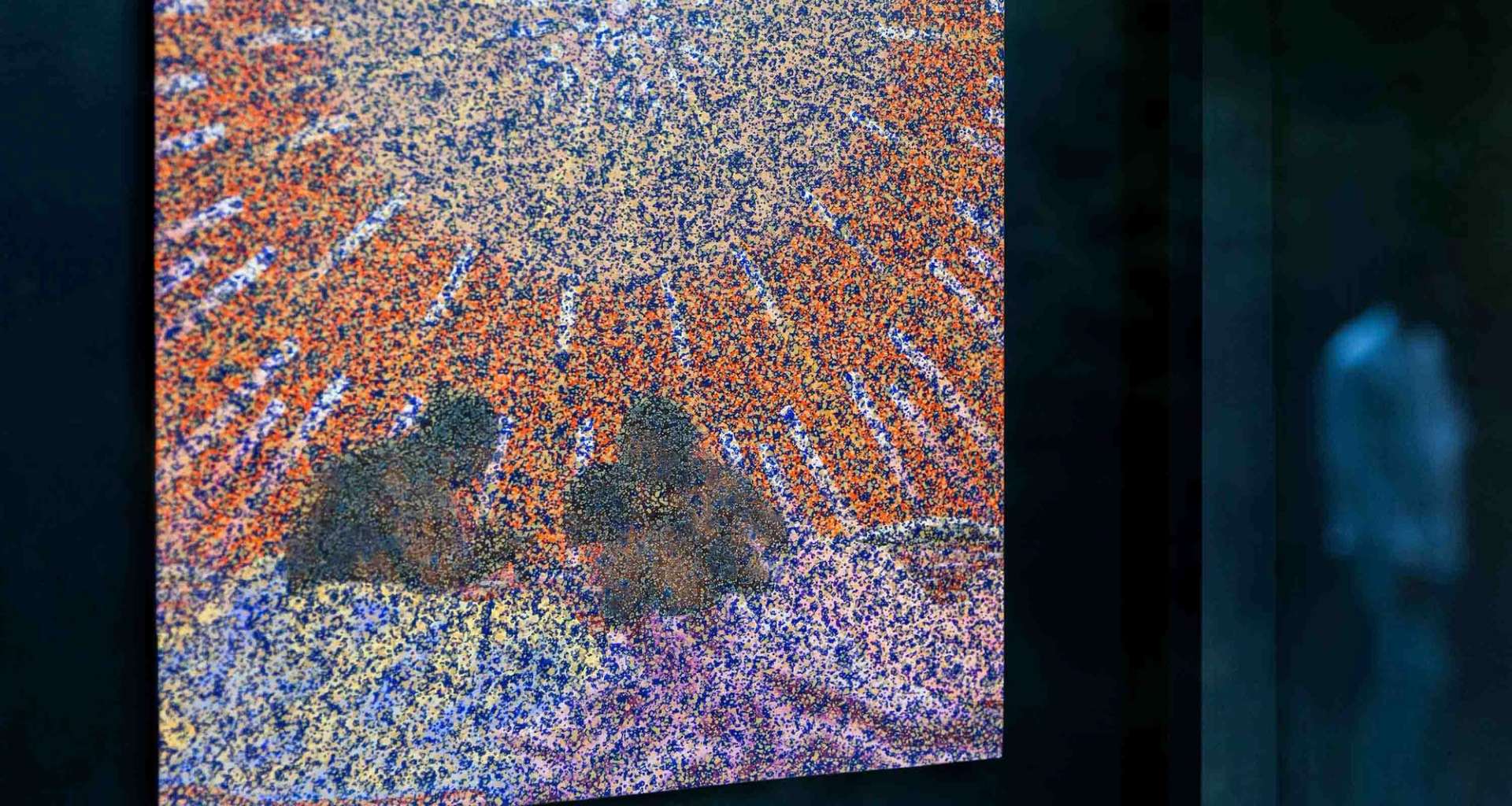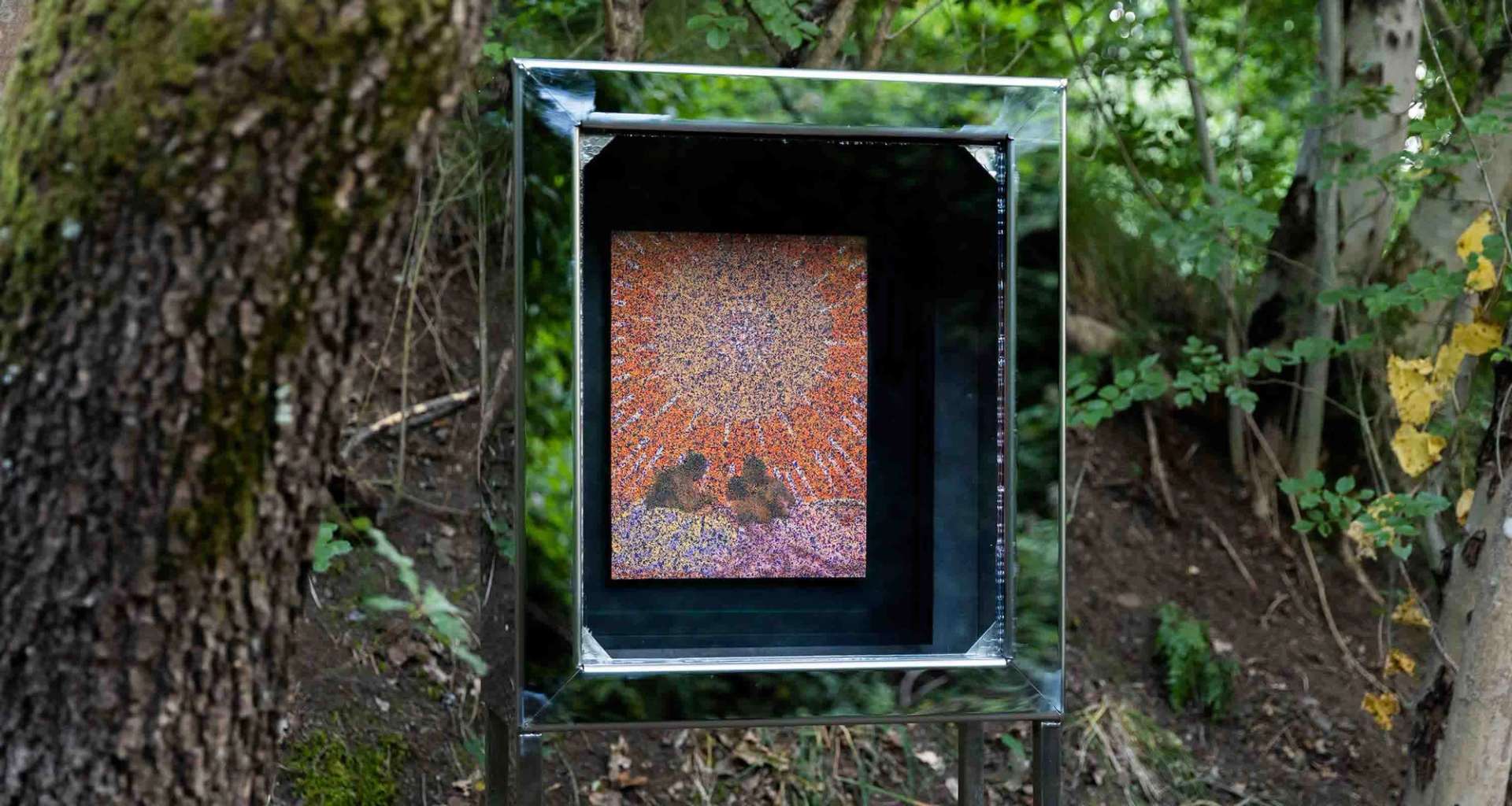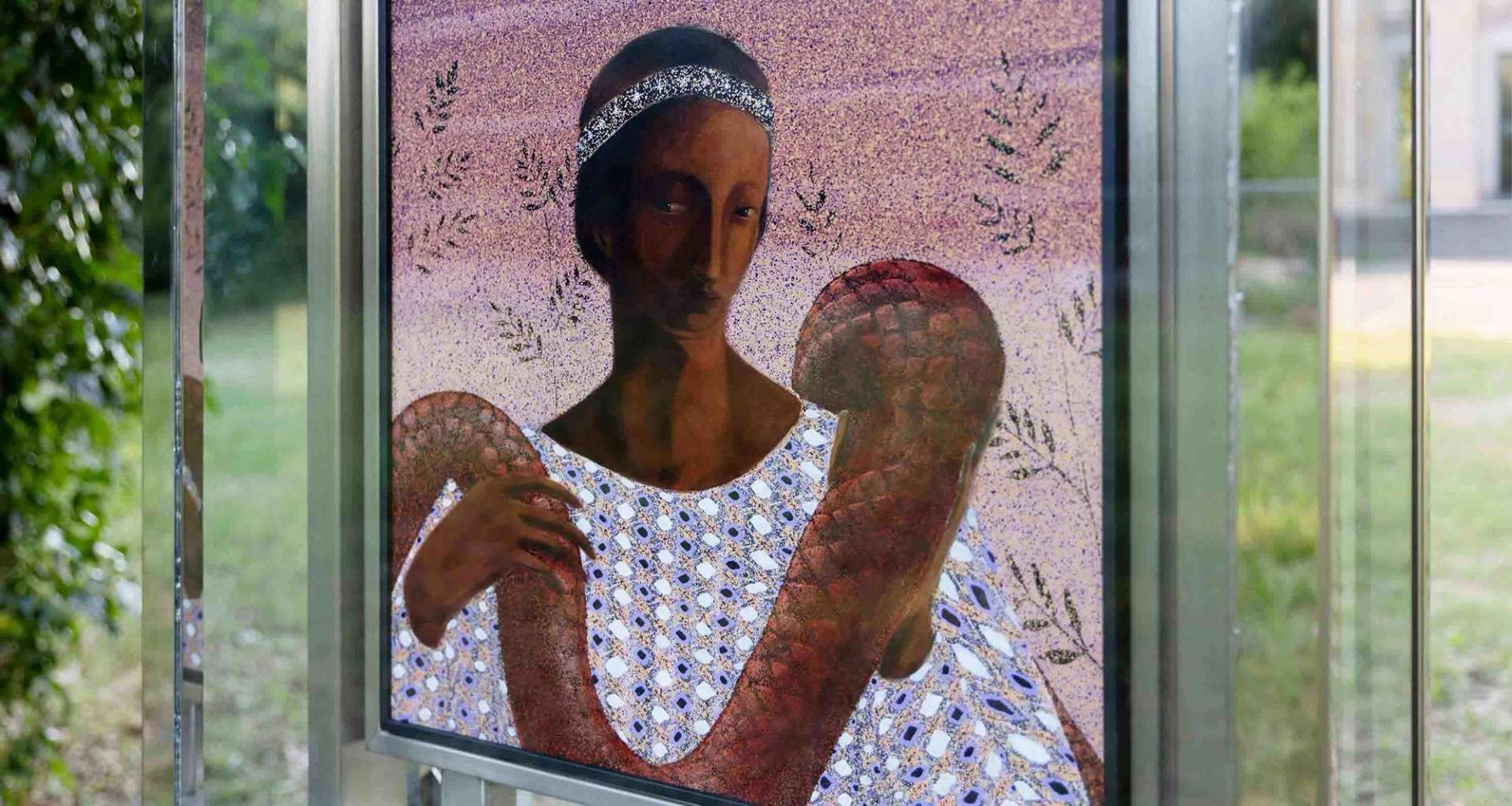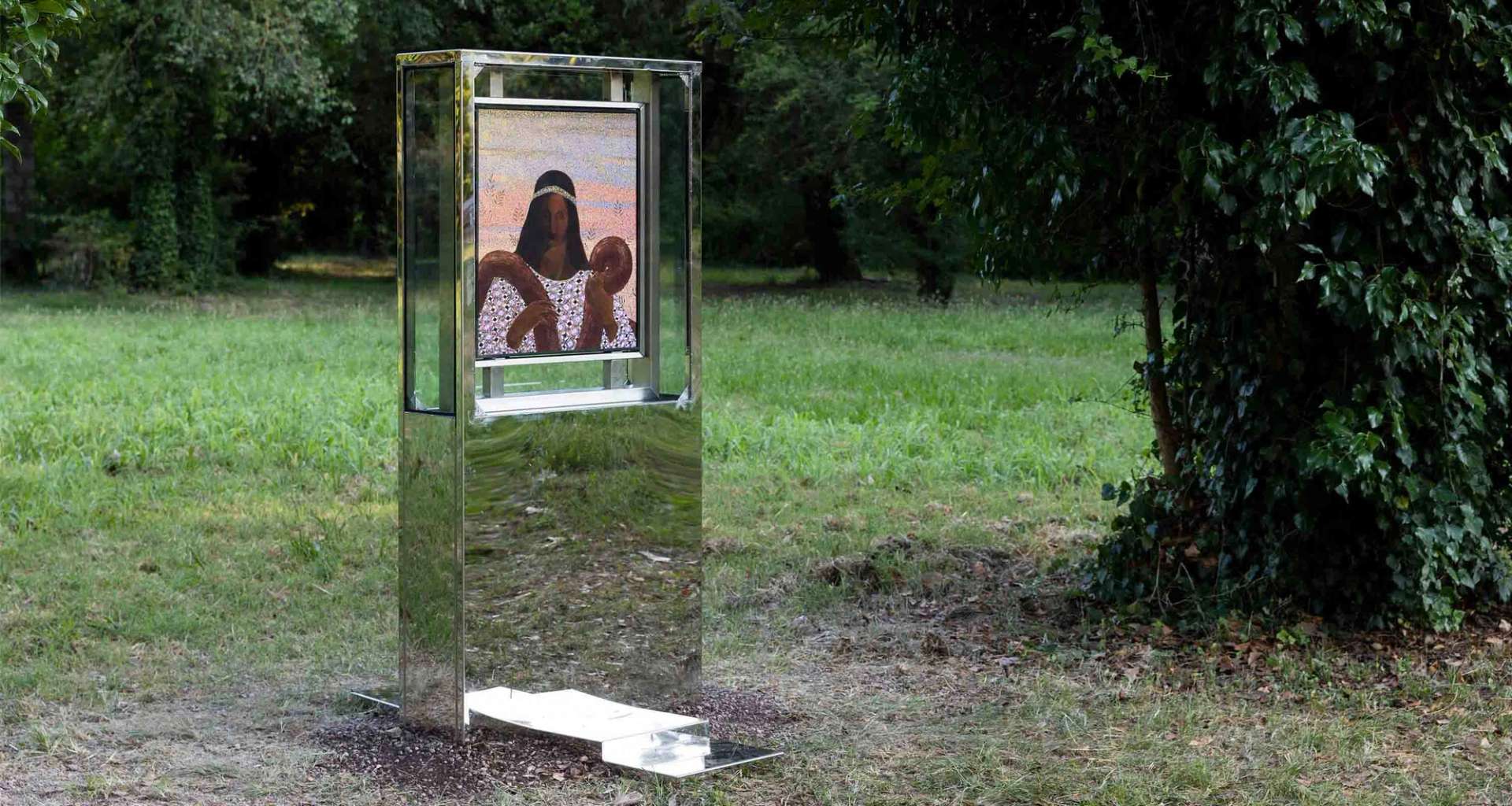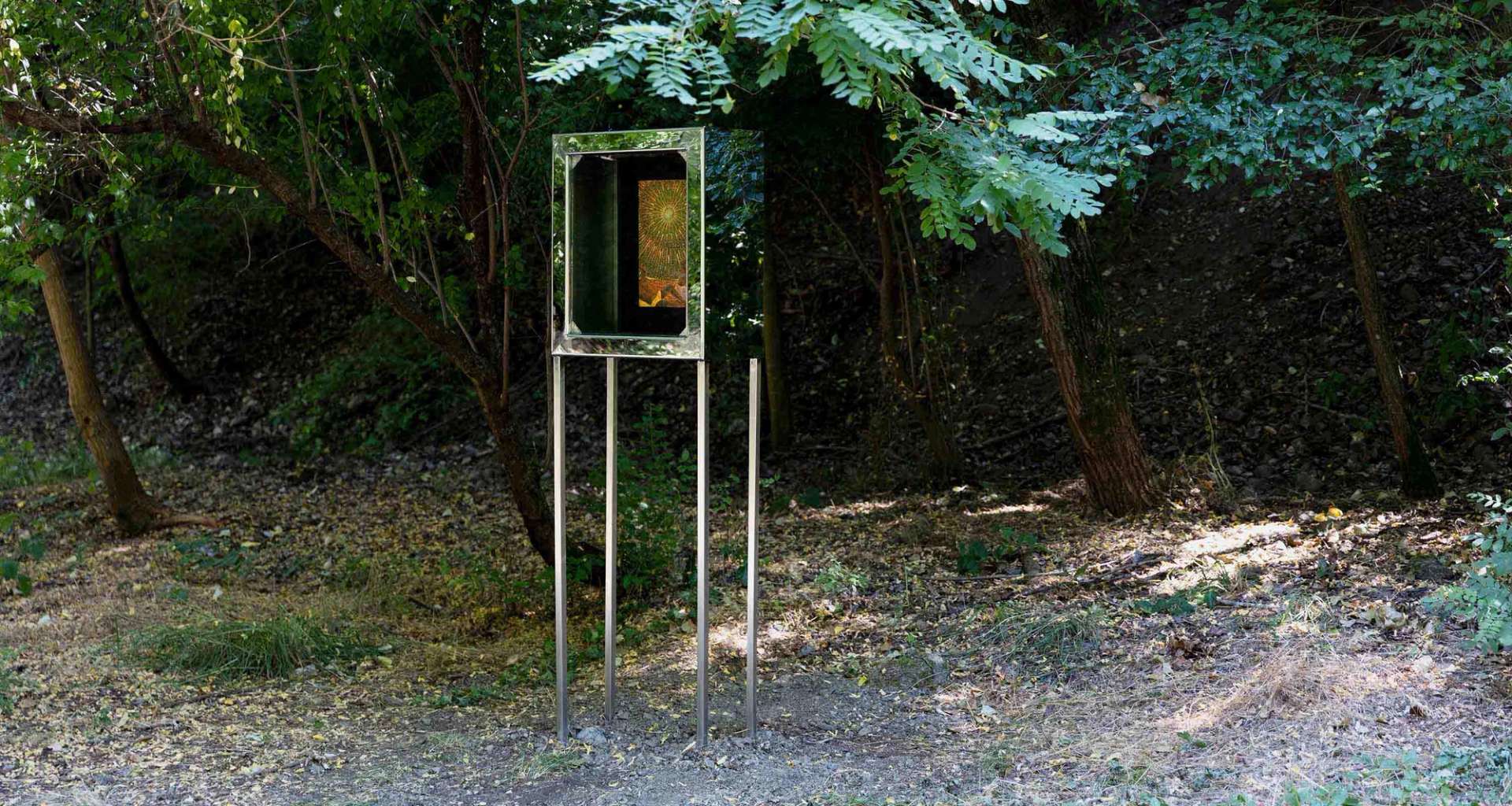Jem Perucchini’s work is divided into a series of pictorial pieces created for a number of places in Battaglia Terme. These works immerse themselves in these locations through exhibition structures that reinterpret the typology of wayside edicole (shrines). Made of reflective material, they incorporate and replicate the surrounding world, constituting a heterotopic place that initiates connections between different spaces and times. Through a revival of elements taken from classical mythology, the artist aims to trigger a dialogue using a fantastical transfiguration of universal themes starting from some of the village’s unique features.
Proteo is the old oracle that at midday re-emerges from the sea to rest in a cave: taking on a different shape each time to disguise himself, he finds refuge in the historic neighbourhood of Ortazzo, the heart of the village’s riverside life.
Tiresia, fated to gender change, consummates his transition in front of the INPS thermal spa that was built during the Fascist period and today is disused.
Dionysus, a divine being with a multiform nature oscillates between masculine and feminine, animalistic and divine, tragic and comic. He consumes the mystical delirium along the Ferro di Cavallo path that crosses the disused trachyte quarries on the hills around Battaglia.
THE REINTERPRETATION OF THE WAYSIDE “EDICOLE” TRIGGERS A HYBRIDIZATION BETWEEN THE MYTH, THE EXPLORATION OF A NOMADIC AND SHARED KNOWLEDGE, AND THE HISTORY OF BATTAGLIA TERME, WHICH IS CHARACTERIZED BY CONTINUOUS TRANSFORMATION AND REINVENTION
Jem Perucchini (Tekeze, Ethiopia, 1995) has always studied cultural anthropology and he questions the relationship between images, monuments and objects that have become symbolic for society over time and fetishes placed in relation to the single individual. Recently graduated in Painting from the Fine Art Academy in Brera and in 2018 he won the Equita Private Banking Award for Brera.
EACH EXAMPLE ENTERS INTO DIALOGUE WITH THE SURROUNDING ENVIRONMENT THROUGH THE DEPICTION OF “TOPOI” (COMMON PLACES) THAT HAVE SURVIVED TO THIS DAY
Battaglia Terme is a village in the Veneto of 3,872 residents, part of the province of Padua, which is 20km away. A river village of the lower Padua area, founded in 1200, everything here is tied to water: it was home to a mill, a paper mill, the sawmill and a mallet workshop. The Museum of River Navigation (Museo della Navigazione Fluviale) holds over 4,000 artifacts and the natural thermal cave of Colle di S. Elena was already around and known during the Longobard era. The village is home to important villas, such as the Castello del Catajo, dating from the 16th century, and the Villa Emo-Selvatico, from the 17th century.
